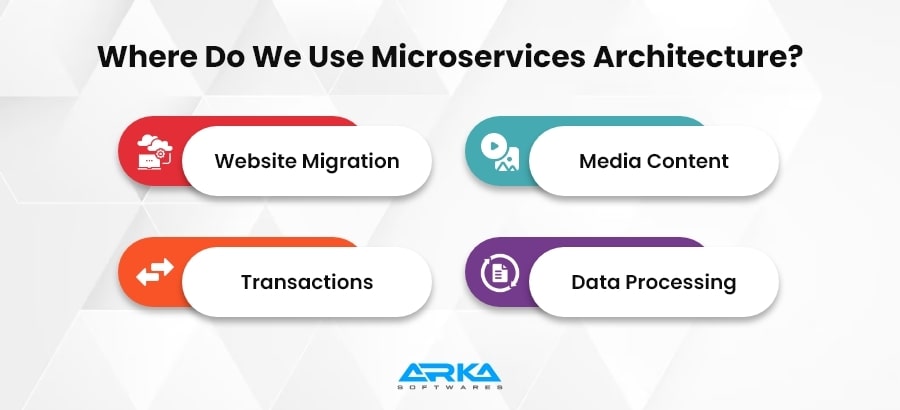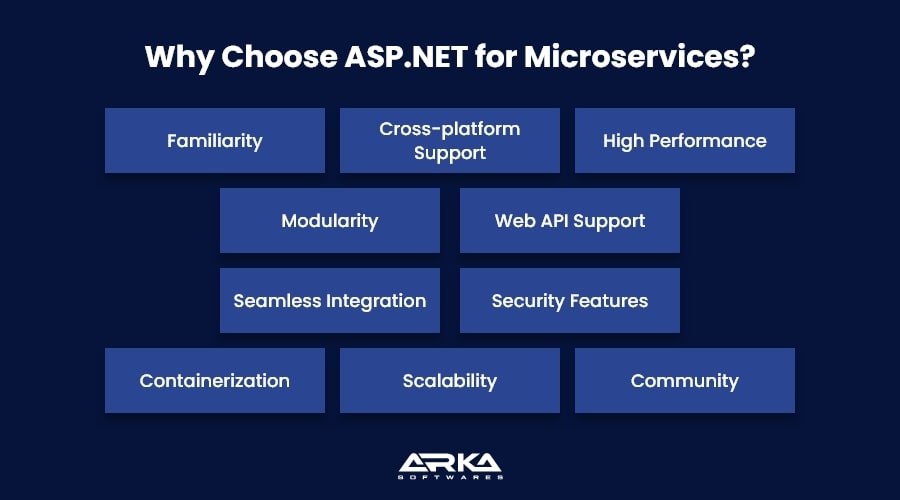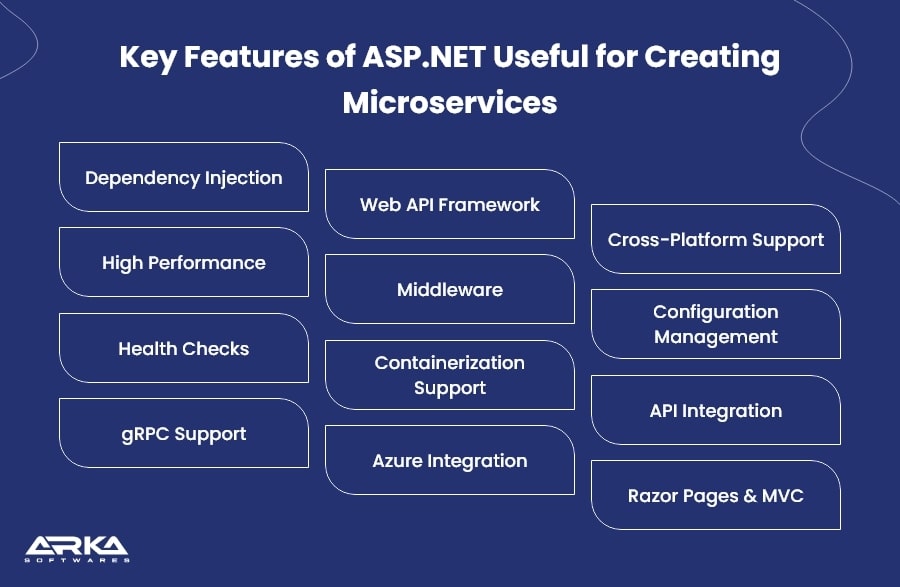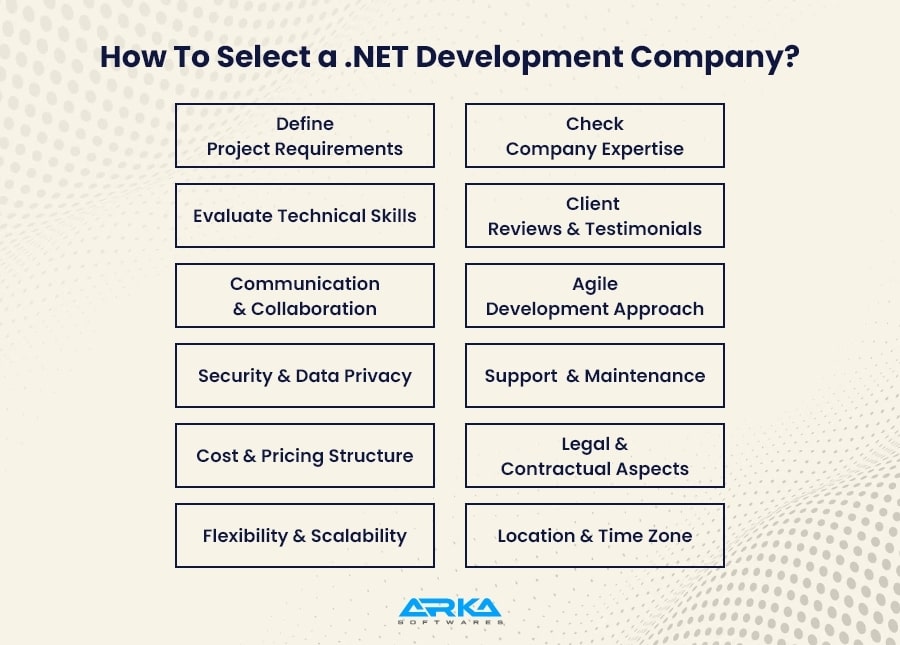Understanding Microservices Architecture
In the fast-changing world of software creation, companies always look for ways to make flexible and quick apps. A method that has become very popular is the small-parts building design. This article discusses microservices architecture and why asp.net core development services is essential for a company using .NET Core in 2025.
Microservices architecture is a way to build software that splits it into small, separate pieces that don’t rely on each other. These parts can be made, put out there, and grown alone from one another. Unlike whole applications, where all parts are closely connected, microservices let you build different pieces separately and independently. This approach allows developers to build, deploy, and update individual microservices without disrupting the entire application. Each asp.net core development services works on a particular business skill and can talk to other small services using precise interaction methods.
Where do we use Microservices Architecture?
The Microservices architecture has numerous advantages that make it suitable for specific situations:
- Scalability: Microservices can be sized up or down independently as needed, leading to improved use of resources and better performance.
- Agility: The building-block style of microservices makes creating and putting out new functions fast. This cuts down on the time needed before products reach the market, allowing quick rounds of changes.
- Resilience: If a tiny part of an app breaks, it does not ruin the whole thing because each piece works by itself. This makes errors more straightforward to deal with and boosts the trustworthiness of the entire system.
- Team Autonomy: Using small service blocks helps teams work on their own parts separately. This gives them more freedom and makes the process quicker.
- Technology Diversity: Microservices design lets you use many computer codes and tech, allowing groups to pick what’s best for each small service.

Image source: Arka Software
What is ASP.NET Microservice Architecture
Asp.net core development services is a well-liked tool for creating websites. It gives you a strong and changeable base to make new apps in today’s style. Using ASP.NET along with microservices layout becomes a solid way to create apps that can grow easily and quickly. By using ASP.NET Microservice Architecture, developers can take full advantage of the adaptability of small services while also using what the .NET system is capable of.
The Role of .NET Core in Building Scalable and Agile .NET Core Applications
.NET Core is a free and shared program system that lets builders create Windows, macOS, and Linux apps. It gives a high-quality way of working and a big group of tools that help, making it the best pick for creating .NET Core programs that can increase. Here are some key reasons why asp.net core development services Core plays a crucial role in driving success for a .NET Core development company:
Top Tools for Optimizing Your ASP.NET Core Web App Performance
In this article, List out asp.net core web app performance optimizing tools by asp.net core development company. This tool improve speed up your websites.
- Cross-Platform Compatibility: The .NET Core lets people who make apps create programs that can work on many different systems, giving them options and a way to reach more users.
- High Performance: The .NET Core is made to give excellent speed, which means it’s suitable for creating fast-working apps that can manage a lot of work at once and grow well.
- Modern Development Experience: The .NET Core gives a new way of making things with features like self-running coding, easy control over parts you use, and help for today’s popular ways to build software, such as putting it into smaller bits or using small linked programs.
- Cloud-Native Support: The .NET Core makes programs work well in the cloud. It has ready help for putting things into containers and tiny services and works with places like Azure, where you can place your program on their servers.
- Community and Ecosystem: The .NET Core has a strong group of people and many helpful tools, making it simple for builders to create and keep up with apps.
Critical Components of .NET Core for Microservices Development
Many essential parts have a big job when making small services with .NET Core. Here are some of the top components:
- ASP.NET Core: Asp.net core development services gives a strong base for making web apps and APIs. It provides services such as route marking, model fastening, and need delivering. These are very needed for growing small parts of a more extensive system.
- Entity Framework Core: Entity Framework Core is a simple and customizable tool for connecting objects to databases. It makes getting data in small services easier.
- Docker: Docker is a tool that helps developers put their apps and what they need to run into easy-to-use, small boxes. It makes it simple to start using and grow small services.
- Kubernetes: Kubernetes is a free tool that helps in arranging containers. It automatically makes putting up, growing, and handling small packaged apps happen. It offers top-level tools for using small services in real-world setups.
- gRPC: gRPC is a fast and free tool for making spread-out systems. It helps small services talk to each other quickly and easily using a simple computer language.
Why Choose ASP.NET for Microservices?

When it comes to choosing a framework for microservices development, ASP.NET offers several advantages:
- Mature and Stable: ASP.NET has been here a long time and has repeatedly shown that it’s stable and dependable. Microsoft supports it, and many people are changing it all the time, so you can be sure help will always be available.
- Easy Integration: ASP.NET fits with other Microsoft tools like Azure, Visual Studio, and SQL Server. This simplifies creating complete solutions and using what you’ve already invested in the Microsoft world.
- Scalability and Performance: ASP.NET Core is made to work fast and grow, so it’s suitable for creating small services that can manage large tasks and get more extensive when needed.
- Security: ASP.NET Core already has safety tools, like login control, permission management, and data security. This makes sure that small services made with ASP.NET are safe straight away.
- Developer Productivity: ASP.NET Core gives a new way to make programs with auto-building, quick refreshing, and lots of helpful tools and libraries. This makes developers work faster and quickens the building process.
The Process to Use Microservices Architecture with .NET Application
To effectively use microservices architecture with a .NET application, the following process can be followed:
- Identify Business Capabilities: Spot the business skills that must be implemented as small services. Split the use into tinier parts that work independently using these abilities.
- Define APIs: Set clear rules for how microservices talk to each other. This ensures that things are not tied too tight and allows for the separate building and use of small services.
- Implement Microservices: Make each small part of the service its project in the .NET Core solution. Use suitable systems and tools for each small service, like ASP.NET Core for web services and gRPC for talking between services.
- Deploy and Orchestrate: Use Docker to start each small service in its box. Use Kubernetes or another control system to handle and grow the setup of small services.
- Monitor and Maintain: Put in place a way to watch and track what each small service is doing. This will let you see if it’s working well, find any problems or mistakes, and figure out how to fix them. Keep an eye on and manage the small parts of a system all the time to make sure they work their best and can be trusted.
Key Features of ASP.NET for Building Microservices

Asp.net core development services provides several key features that make it an excellent choice for building microservices:
- Dependency Injection: ASP.NET Core comes ready to help give out parts. This makes it easier to control the things that other parts need and encourages small bits of code that can be tested.
- Middleware Pipeline: ASP.NET Core uses a tool path that lets developers set up and change how HTTP messages are sent and received. This allows everyday things like logging, storing data, and checking who can access it easily to break it up into parts and use it again.
- Model Binding: ASP.NET Core has robust model binding features that make it easy to take data from an HTTP request and link them to model objects. This cuts down repetitive code and boosts the work rate of developers.
- Authentication and Authorization: ASP.NET Core already has help checking and allowing access, making it simple to keep microservices safe. It backs up many ways to prevent someone from being who they are, such as JWT, OAuth, and OpenID Connect.
- Testing and Debugging: ASP.NET Core gives many helpful tools and frames for checking and fixing small services. It helps with tiny parts checking, significant parts putting together checks, and complete system tests. This makes it simpler to make sure microservices are good quality and can be trusted.
The Future of .NET Core Development and the Importance of Adopting Microservices
The future of making things with Asp.net core development services looks good, as Microsoft keeps putting money into the system and constantly adds new stuff to it. Small service design will be important as groups work to make significant and quick programs. By using more minor services and making full use of ASP.NET Core and .NET Core development, businesses can be ahead of the game and give winners with growing solutions in 2025 right up to today.
Choosing the Right .NET Core Development Company for Your Microservices Project

When starting a small parts project, picking the correct .NET Core development business is very important. Here are some factors to consider:
- Expertise and Experience: Find a company that has shown they can build small services using .NET Core. Look at their work samples and client comments to see how good they are and how much experience they have.
- Technology Stack: Ensure the business knows a lot about the tools and ways to build small services, like ASP.NET Core, Docker, and Kubernetes.
- Agile Development Methodology: Pick a business that uses a flexible way of development, like Scrum or Kanban. This ensures the improvement process is repeated, can be changed, and is transparent.
- Collaboration and Communication: Working well together and sharing thoughts are significant for a small project with many parts to be successful. Pick a business that likes explicit talk and keeps up ongoing communication ways.
- Support and Maintenance: Making small service parts is only the beginning. Ensure the business gives constant help and keeps services going to make your microservices work well without problems.
Conclusion
Ultimately, small services build make programs grow big and quickly change over time. ASP.NET Core helps to succeed with .NET Core development in 2025 using all the tools needed for success. By using small parts of software and taking advantage of ASP.NET Core, companies can make big apps that grow well, stand up to problems, and keep working in the industry’s future changes. Pick the right .NET Core company for development, and start on a path to success with microservices.



